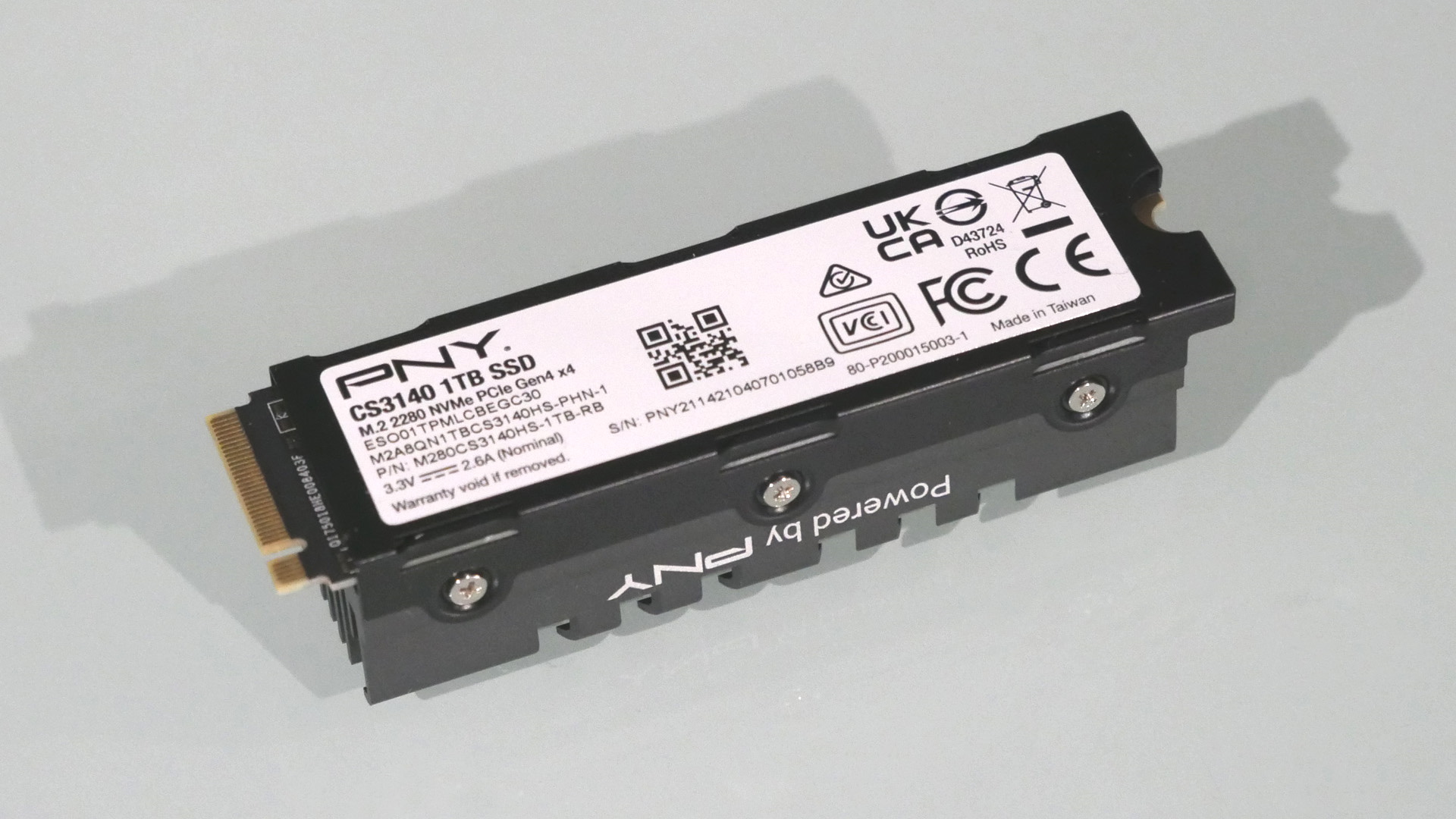Our Verdict
PNY’s latest SSD is a strong contender in the high-performance PCIe Gen 4 segment and for the most part, it puts out great numbers. The beefy heatsink keeps it impressively cool, too. But at this price, there's just too much competition for this to really stand out.
For
- Impressively chunky and effective heatsink
- Strong read performance
Against
- Writes not quite so impressive
- Unspectacular real-world performance
- Lacks drive duplication software
PC Gamer's got your back
Just in time for a new generation of PCI Express 5.0 drives to appear, perhaps as early as next year, the latest SSDs based on the PCIe 4.0 protocol are beginning to bump into the limitations of what remains, just for now, the fastest available storage interface for consumers.
We give you the new PNY XLR8 CS3140 in a 1TB configuration. PNY claims the Gen 4 drive is good for no less than 7,500MB/s sequential reads. Given this is a quad-lane SSD, the maximum theoretical bandwidth available clocks in at 8GB/s. Assuming at least some protocol overheads, you’re looking at an SSD that’s as good as it currently gets or can get when it comes to peak read speeds.
For the record, the likes of the mighty Samsung 980 Pro and also the Sabrent Rocket 4 Plus both top out at 7,000MB/s or 7GB/s. The XLR8 is also marginally ahead of the lightning-quick Adata XPG Gammix S70, which is claimed to be capable of 7,400MB/s. As for writes, this 1TB model isn’t quite as spectacular with peak sequential performance of 5,650MB/s, albeit the beefier 2TB drive knocks out 6,850MB/s, at which point you’re getting awfully close to the PCIe Gen 4x4 ceiling in both directions.
For whatever reason, PNY is rather coy when it comes to random access or IOPS performance. It’s not exactly dying to share when it comes to other details like the controller chipset or write endurance, either. However, a peek under the hood reveals the PNY XLR8 CS3140 is powered by a Phison PS5018-E18 controller and four 256GB packages of Micron 96-Layer 3D TLC NAND.
Something of a known quantity, and a controller we’ve already seen in other SSDs including the Sabrent Rocket 4 Plus, the E18 is an eight-channel NVMe 1.4 chip knocked out on none other than TSMC’s 12nm process. It’s loaded with five CPU cores in total, three based on generic ARM Cortex R5 IP and two cores with proprietary Phison designs. Phison says the E18 is good for 7.4GB/s read and 7GB/s write speeds, plus no fewer than one million IOPS, which at least sheds a little light on that aspect of the XLR8 performance envelope.
Other than that, this 1TB drive gets 1GB of DDR4 cache memory and a big, fat, hunky looking heat sink, which bodes well for thermals. Anyway, in our testing the XLR8 is perhaps unsurprisingly pretty close to the similarly specced Sabrent drive when it comes to peak throughput. In other words, reads are nearer 7GB/s than the claimed 7.5GB/s—and lower still than that depending on the benchmark software used. The XLR8’s sequential write speeds are likewise a little off the claimed numbers.
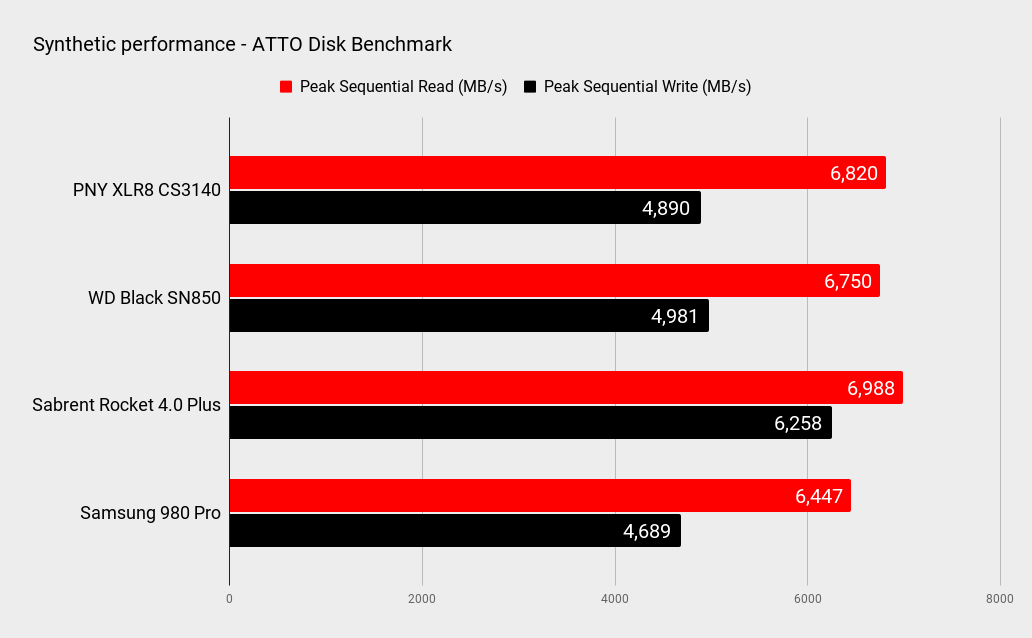
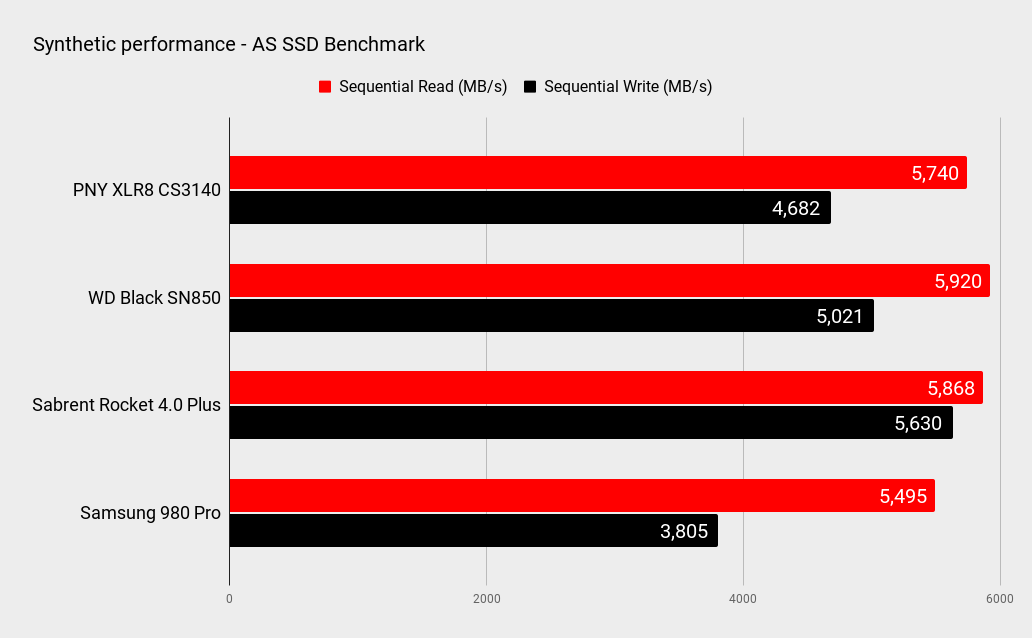
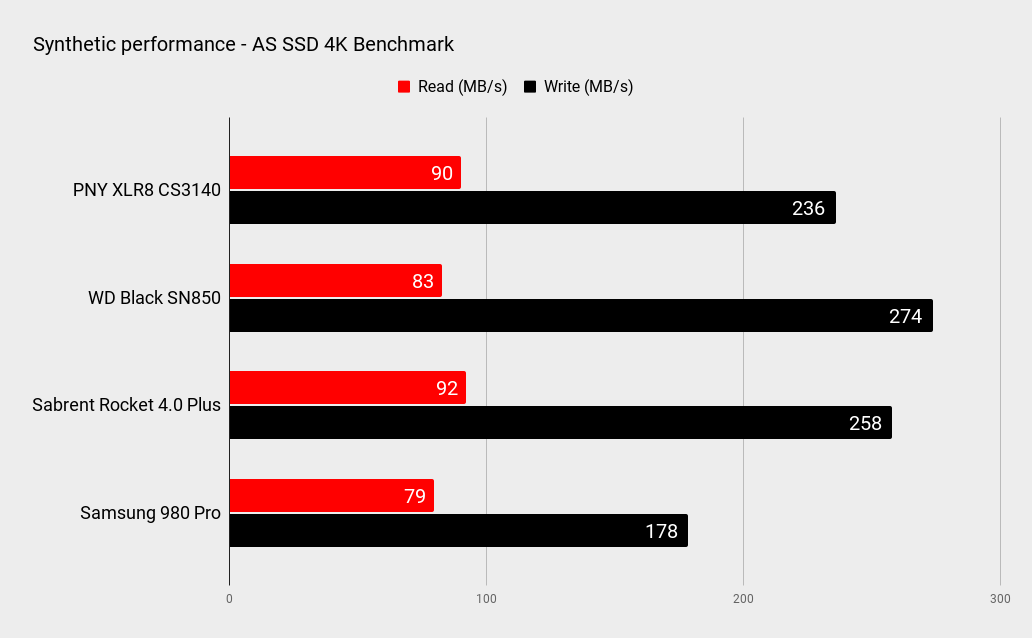
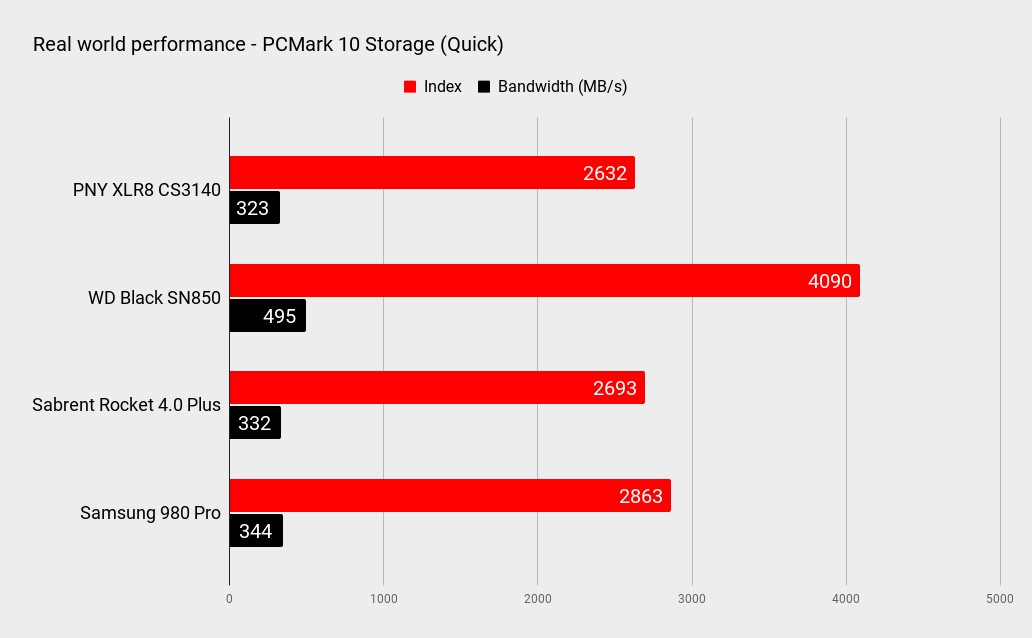
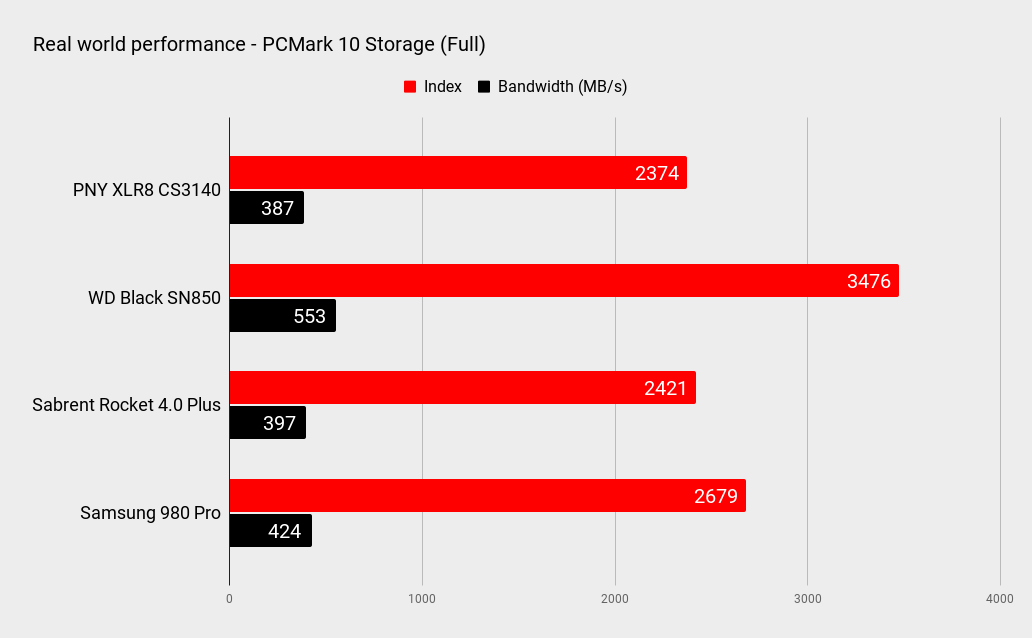
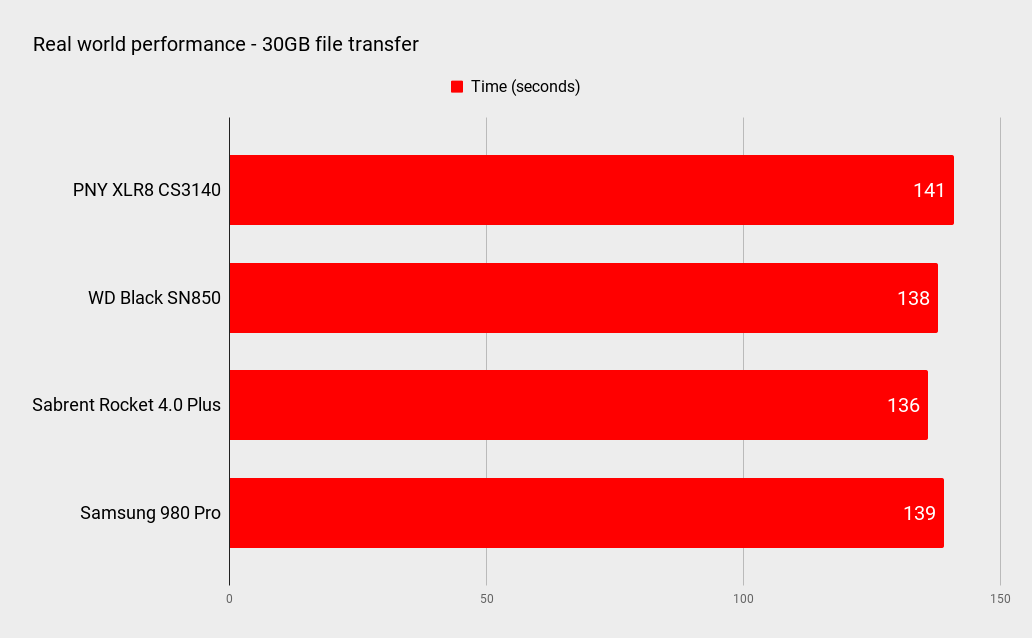
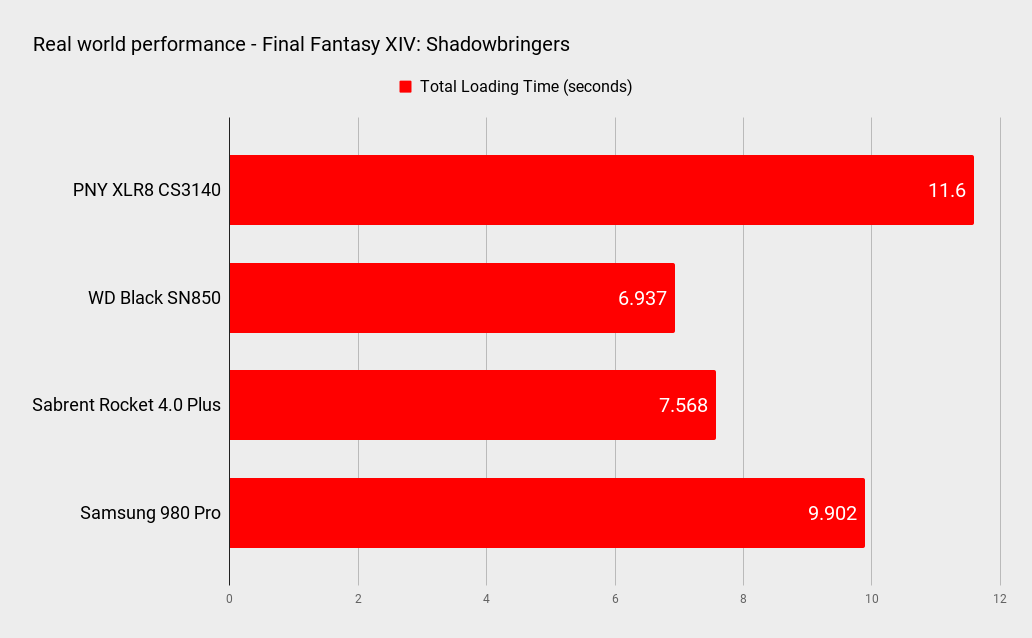
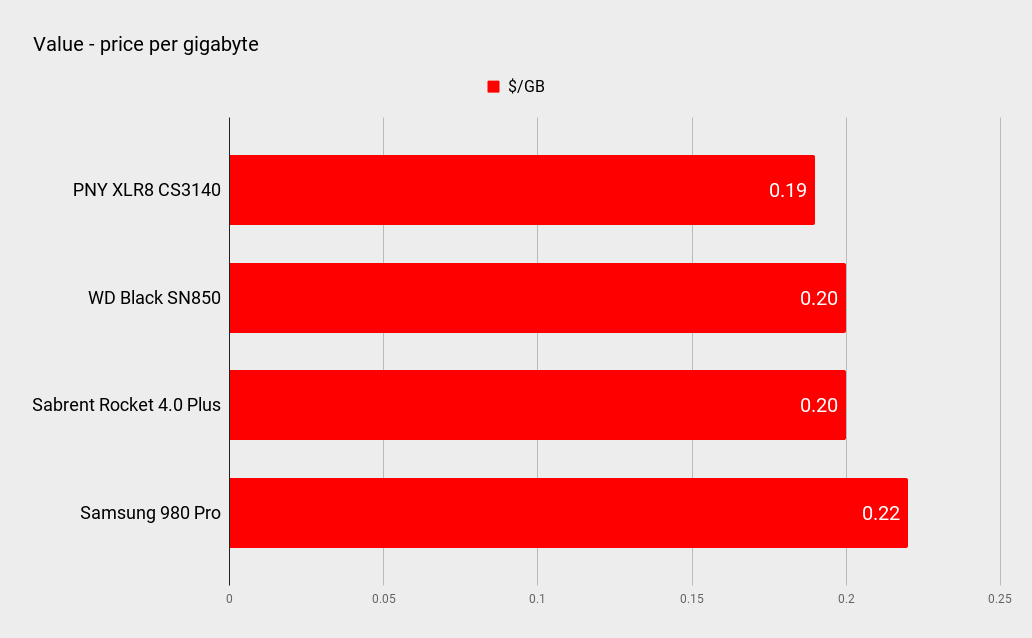
As for 4K IOPS performance, the overarching narrative is of a drive that puts out excellent numbers but isn’t quite at the absolute bleeding edge of what a NAND flash-based SSD can currently achieve. For that, you’d want WD’s Black SN850, albeit the delta isn’t huge. Of course, a really big step up in IOPS performance can only be Intel’s Optane drives and their exotic 3D Xpoint memory. But that’s a whole different can of phase-change powered worms.
Keep up to date with the most important stories and the best deals, as picked by the PC Gamer team.
Whatever, in terms of sustained performance, during our pre-benchmarking-proper drive prep procedure, the XLR8 maintained its initial internal file copy performance of 1.7GB/s for no less than 300GB before dropping to a fluctuating range of roughly 400MB/s and 800MB/s.
No doubt thanks to the beefy heatsink, the controller chip stays cool under sustained loads, topping out at a mere 36 degrees Celsius. That implies the 300GB performance cliff is an SLC cache limitation rather than thermal throttling. Either way, it’s a pretty good chunk of bandwidth to play with before performance begins to tail off.
Overall, the PNY XLR8 CS3140 is a solid enough all-around performer. It’s based on proven technology in the Phison controller chipset and Micron NAND memory, and it’s also backed by a healthy five-year warranty. So, the lack of full disclosure regarding the write endurance isn’t a major concern.
That said, the PNY XLR8 CS3140’s peak performance doesn’t quite match the official claims. It was also a little tardy in PCMark 10, Final Fantasy XIV, and in our real-world file transfer when compared to the very best. All of which means XLR8 will live and die according to its comparative value proposition.
There’s a version without the heatsink that’s priced roughly on a par with the Sabrent Rocket 4 Plus, but we’d be tempted to stump up the extra $10 or equivalent to get this beefy, nicely cooled model. Or at least we would were it not for the fact that the WD Black SN850 is also available for pretty much the same money. The WD drive is such a classy all-around performer, we’d find it hard to overlook.
PNY’s latest SSD is a strong contender in the high-performance PCIe Gen 4 segment and for the most part, it puts out great numbers. The beefy heatsink keeps it impressively cool, too. But at this price, there's just too much competition for this to really stand out.

Jeremy has been writing about technology and PCs since the 90nm Netburst era (Google it!) and enjoys nothing more than a serious dissertation on the finer points of monitor input lag and overshoot followed by a forensic examination of advanced lithography. Or maybe he just likes machines that go “ping!” He also has a thing for tennis and cars.

